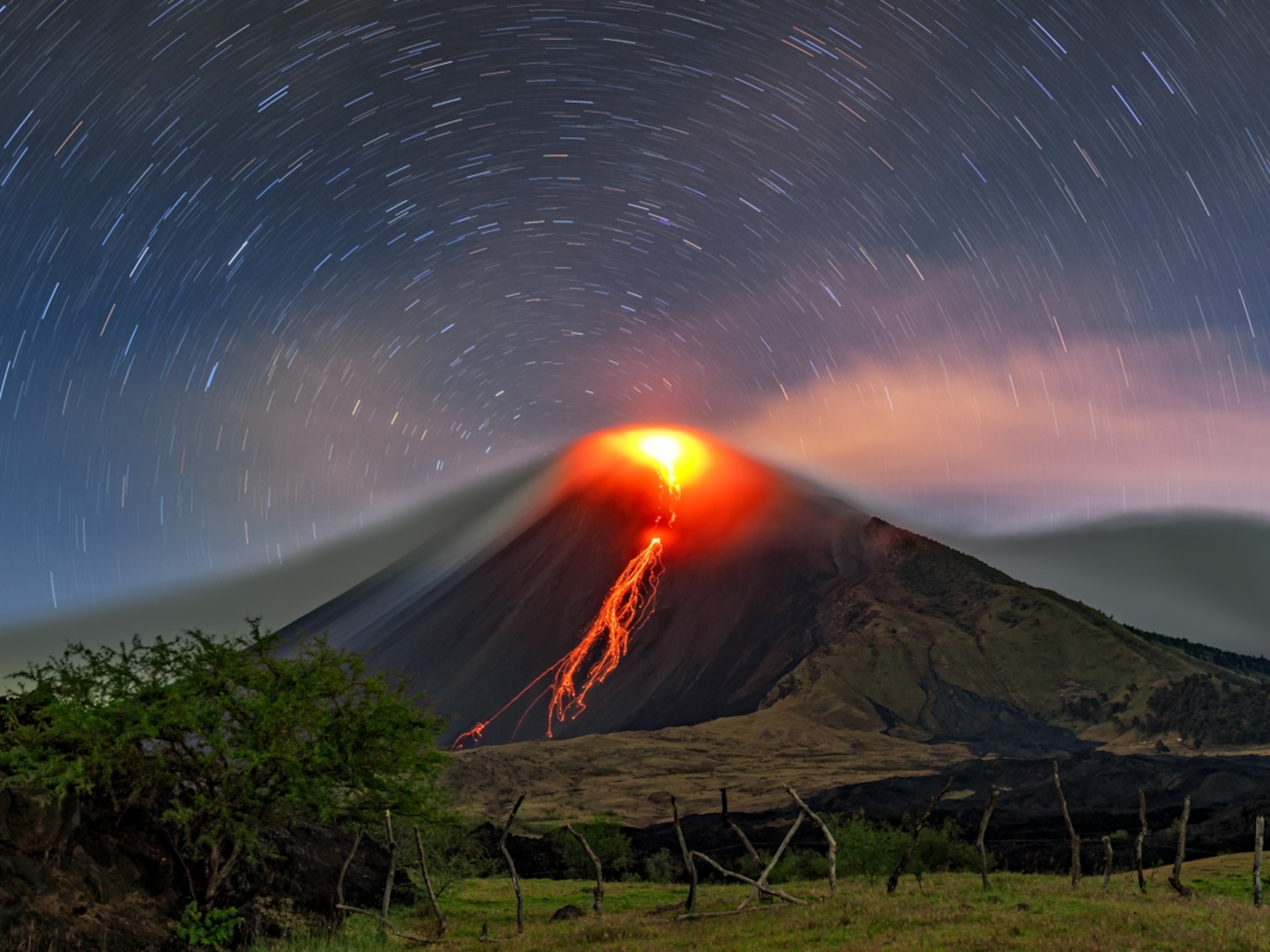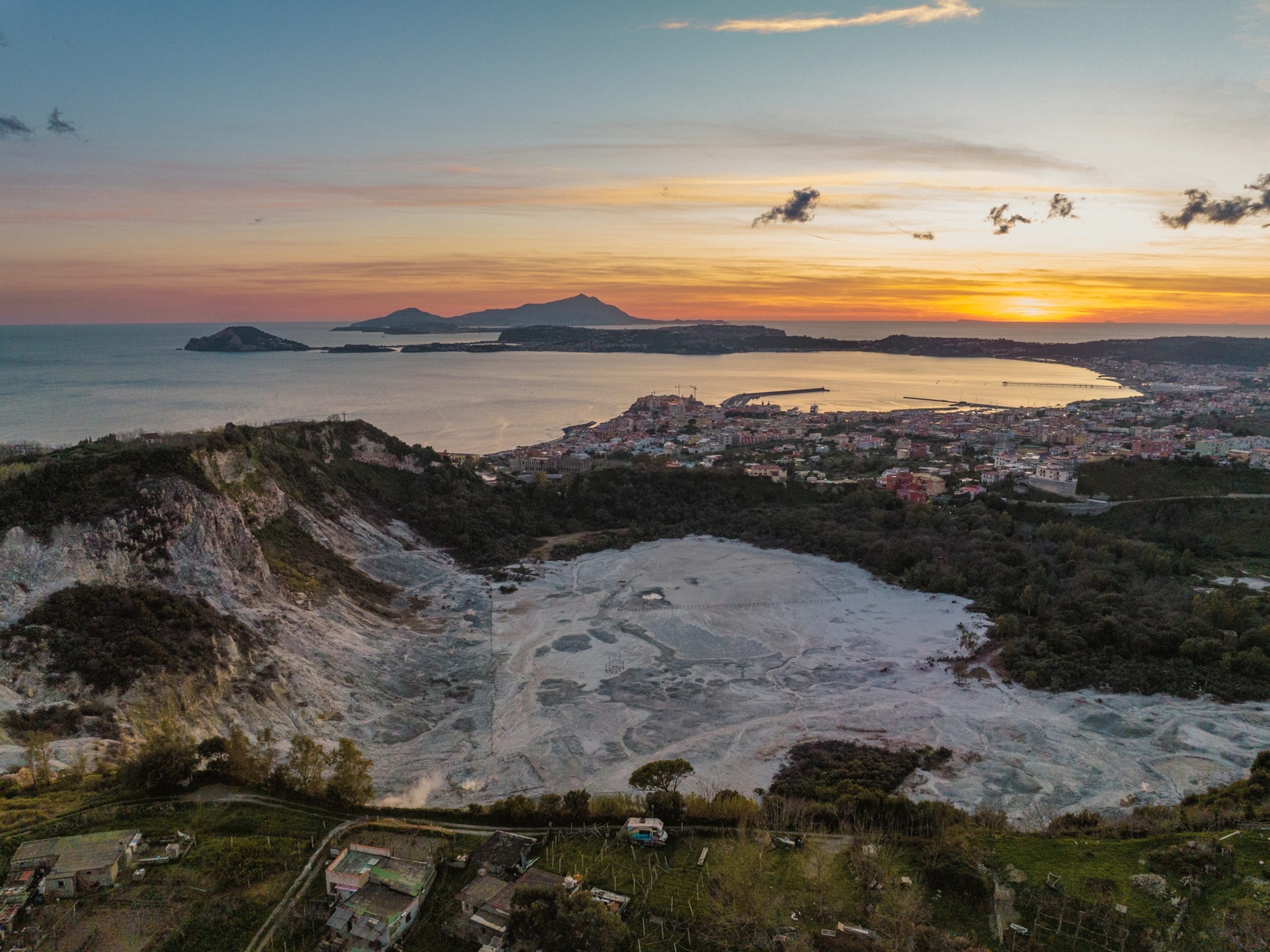
"Sleeping" Volcanoes Can Wake Up Faster Than Thought
Dormant volcanoes can stir to life in mere days instead of hundreds of years, according to a new volcano model.
The world's "sleeping giants" can wake up much quicker than thought, according to a new volcano model.
Scientists believe the magma chambers—or reservoirs of molten rock—under dormant volcanoes are filled with sticky, viscous mush.
For a volcano to "wake up," this mush needs to be thoroughly heated by fresh, hot magma rising up from the deep Earth.
According to current theory, it would take several hundred or perhaps a thousand years for the heat to distribute through the chamber and make the magma fluid enough to erupt.
But a new model based on fluid dynamics shows that hot, deep magma can mix with the older, sticky stuff much easier than believed, scientists say.
(Related pictures: "America's Ten Most Dangerous Volcanoes.")
"That's one reason that the rejuvenation can happen so quickly—the transport of hot material coming in [to the] magma system is much more efficient than we previously had understood," said study co-author George Bergantz, a geologist at the University of Washington.
Real-Life Volcano Eruptions Support Model
The team compared their model with two real-life eruptions: the Philippines' Mount Pinatubo in 1991 and an ongoing eruption of the Soufrière Hills volcano (picture) in the British Caribbean territory of Montserrat (see map).
The scientists analyzed the two volcanoes' magma temperatures, chamber sizes, and other physical features to come up with rough time intervals between the first warning signs and the actual eruptions.
In the case of Pinatubo, the team discovered that the magma chamber took only 20 to 80 days to reactivate, versus the 500 years predicted by conventional theory. (See volcano photos.)
Still, the model doesn't suggest reawakened volcanoes are more likely to cause dangerous eruptions, Bergantz cautioned.
(Related: "Worst Volcanoes Even More Dangerous Than Feared.")
"I don't think it really changes our take on that," he said. "Many of the hazards associated [with a dormant volcano waking up] are more related to landslides than eruption processes."
Likewise, a reheated magma chamber doesn't always lead to an eruption, the study authors noted.
Rising Magma Blobs Drive Mixing?
The new study should bring more attention to supposedly resting volcanoes, said Michael Petronis, a geologist at New Mexico Highlands University in Las Vegas, New Mexico, who was not involved in the research.
In general, "whether or not a volcano is actually dormant is up for discussion," Petronis said.
"If this model works, and you can rejuvenate a magma chamber by a pulse of magma, you can kick off an eruption when you weren't expecting it."
Mount Pinatubo, for example, had never erupted in recorded history before it stirred to life in 1991, killing at least a thousand people.
Although Petronis calls the model a "good line of work" overall, there may be some weaknesses, he said.
For instance, the study suggests that the magma-mixing process is driven by buoyancy—that a hot blob of magma rising into the reservoir can completely overturn the mush.
But to Petronis, the buoyancy theory is not enough to explain thorough mixing.
"In order to completely remix all the [mush], that mechanism doesn't work very well," Petronis said. "That blob, sure it will rise, [but] it's not going to remix the surrounding magma—it's not going to be hot enough to remelt everything."
Likewise, the study relies on the assumption that new magma entering the chamber arrives in multiple pulses, something that's still unproven, said Petronis, who received funding this year from National Geographic's Committee for Research and Exploration. (The National Geographic Society owns National Geographic News.)
"There are lots of different hypotheses out there to how those materials get into the chamber," Petronis said.
Volcano "Engines" Still Little Understood
Co-author Bergantz says that the new model—published in last weeks' issue of the journal Nature—is "based on a number of reasonable assumptions."
It's "just a first step in interpreting a much more complex set of processes" that are still little understood, he said.
"When you're looking at a volcano, it's like you're looking at a tailpipe of a car when you really want to see the engine. Most of the processes are hidden from view in Earth's crust."
(Related: "Italy's Etna First Active Volcano to Get 'CT Scan.'")
However, there are a few places on Earth where volcanoes are lying on their sides—giving scientists rare peeks into their plumbing.
Bergantz, for instance, is studying such a volcano in Argentina's San Juan Province (see map) that has only recently been discovered. "It allows us to really lift the hood."





